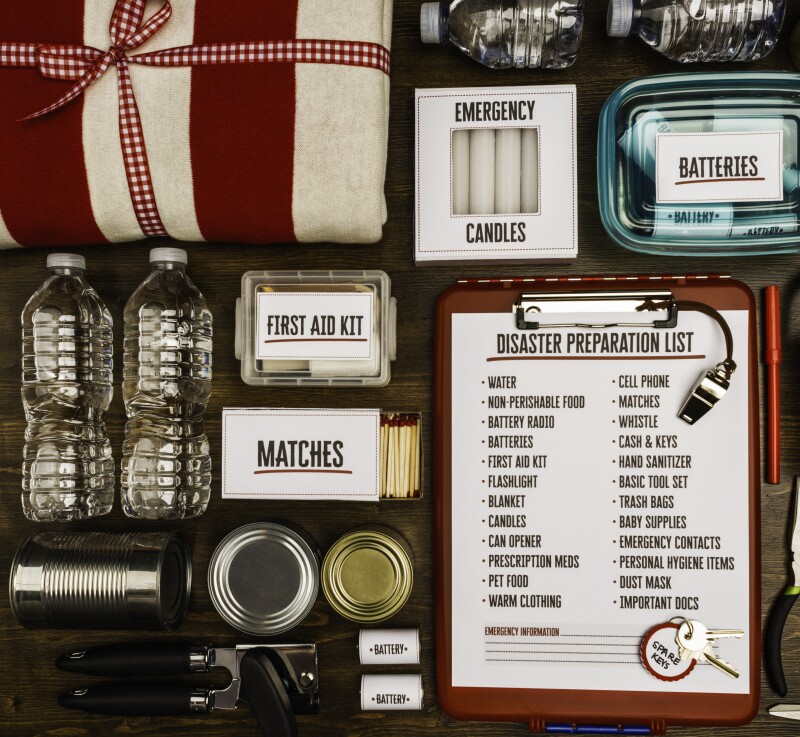Throughout the history of the Church, there have been different apostolic recommendations and counsel on preparing your family for emergencies.
In The Miracle of Forgiveness, President Spencer W. Kimball taught that we should be “anxiously engaged in a positive program of preparation. … The Lord will not translate one’s good hopes and desires and intentions into works. Each of us must do that for himself.” Essentially, President Kimball counseled that it’s not enough to just hope for the best, but that we should actively prepare for it.
According to the Deseret News, Latter-day Saint leaders’ emphasis on self-reliance dates back to the mid-1800s, when food storage began as a practical way to ensure that Church members trekking across the country would survive. Back then, preparation got as specific as Church leaders giving members lists of what to bring and then stockpiling food at storehouses as towns in the West were settled.
By the middle of the 20th century—especially during the Cold War—Church leaders worried about nuclear war and encouraged Latter-day Saints to have two years’ worth of emergency supplies.
Today, the Church recommends a smaller, more practical amount of food storage and other important emergency preparedness tips beyond just stockpiling wheat and water.
► You may also like: Watch: Ukrainian Latter-day Saint shares precious food storage supplies with neighbors
Here’s what the Church’s Gospel Topics page on Food Storage currently says:
What am I supposed to have in my food storage?
There are three main components of food storage:
- Food supply (three-month and long-term)
- Water supply
- Financial reserve
Store foods that are a part of your normal diet in your three-month supply. As you develop a longer-term storage, focus on food staples such as wheat, rice, pasta, oats, beans, and potatoes that can last 30 years or more.
How much food storage do I need?
Take the amount of food you would need to purchase to feed your family for a day and multiply that by 7. That is how much food you would need for a one-week supply. Once you have a week’s supply, you can gradually expand it to a month, and eventually three months.
For longer-term needs, and where permitted, gradually build a supply of food that will last a long time and that you can use to stay alive, such as wheat, white rice, and beans. A portion of these items may be rotated in your three-month supply.
Beyond having a supply of food, the Church’s Gospel Topics page on Emergency Preparedness, recommends having “other supplies” for emergencies as well. Those supplies include:
- Clothing and bedding
- Drinking water
- Financial reserves
- Important documents
- Medication and first aid supplies
- Ways to communicate with family following a disaster
The All Is Safely Gathered In pamphlet, released by the Church in 2007, says, “We encourage members worldwide to prepare for adversity in life by having a basic supply of food and water and some money in savings. We ask that you be wise, and do not go to extremes. With careful planning, you can, over time, establish a home storage supply and a financial reserve.”
A 72-hour-kit for each member of your family is a great way to ensure there are enough food, water, and supplies for everyone in your home. Along with food, each individual bag can include correctly-sized clothing and emergency items like basic first aid items, cell phone chargers, flashlights, batteries, paper maps, and walkie-talkies. Important documents can also be kept in a fireproof waterproof box alongside your family’s kits.
It’s also good practice to check your 72-hour-kits or food supply every 6 months to update expired food, water storage, dead batteries, or emergency clothes that may not fit anymore (especially if you have growing kids). Many members of the Church have made it a habit to check their kits the weekend of general conference—it’s a surefire way to remember to do it every six months!
► You may also like: 8 emergency preparedness items to bring you peace of mind


